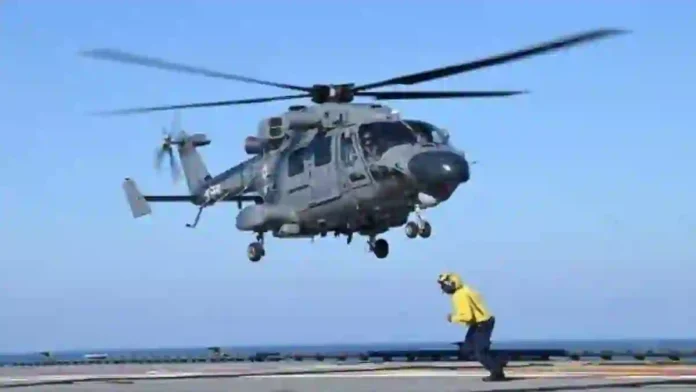A critical safety upgrade on the military’s advanced light helicopter Dhruv fleet, initiated by state-run plane maker Hindustan Aeronautics Limited (HAL) after a string of accidents last year, is nearing completion and the upgraded control system installed on the locally made choppers will improve their airworthiness, officials aware of the matter said on Monday.
The Dhruv fleet, plagued by a nagging design issue, was grounded several times last year after the accidents called into question its flight safety record.
This led to a comprehensive design review of the helicopter’s booster control rods followed by a drive to replace the flaw-ridden existing ones with new rods in each ALH. The development is significant as the armed forces operate around 330 twin-engine ALHs, designed and developed by HAL.
Replacement of the collective control rod has been completed in all the helicopters, said a senior official who asked not to be named.
Replacement of the other two rods (lateral and longitudinal) in the ALH fleet is underway and is expected to be completed by June-end, said another official who also asked not to be named.
“This will improve flight safety. The design improvement is tested and proven. Failure in the helicopter’s control assembly, which consists of the collective, pitch and roll control rods, was the cause of some mishaps,” he added.
These rods allow pilots to control the helicopter’s motion, and any failure can severely affect power input to the rotor blades and cause accidents. The new rods are made of steel instead of aluminium. The multi-mission helicopter has been involved in at least 12 accidents during the last five years. Hindustan Times highlighted the design issue and steps taken to fix it in a series of stories last year.
Read- WILL INDIA INCREASE ITS NUCLEAR WARHEADS IN RESPONSE TO CHINA’S ADVANCES
The Bengaluru-based Centre for Military Airworthiness and Certification (CEMILAC) ordered the design review of the booster control rods to improve the ALH’s airworthiness. CEMILAC, which functions under the Defence Research and Development Organisation, reached the conclusion that the design review was mandatory after an expert committee, formed in the backdrop of a navy ALH ditching (emergency landing in water) into the Arabian Sea on March 8, 2023, explored the possible failures that led to the incident.
ALHs were involved in accidents before and after the navy incident too. HAL began delivering these helicopters to the armed forces in the early 2000s.
The ALH has faced some issues related to its control assembly for some time, said Air Marshal Anil Chopra (retd), former director general, Centre for Air Power Studies. “This issue is behind us now. Control rods made of steel will improve flight safety. Earlier, there were concerns about the metallurgy of control rods in the ALH gearboxes,” he added.
The expert committee found that the most probable cause of the navy ALH incident was a technical failure — an error in the assembly of serrated washers in the booster control rods. The regulatory body red-flagged the drastic reduction in the fatigue life of the control rods.
The Indian Air Force’s latest light combat helicopters (LCH), which inherit several features of ALH, were also grounded earlier last year. CEMILAC had earlier prescribed measures for the resumption of ALH and LCH operations.
(With Inputs From HT)




